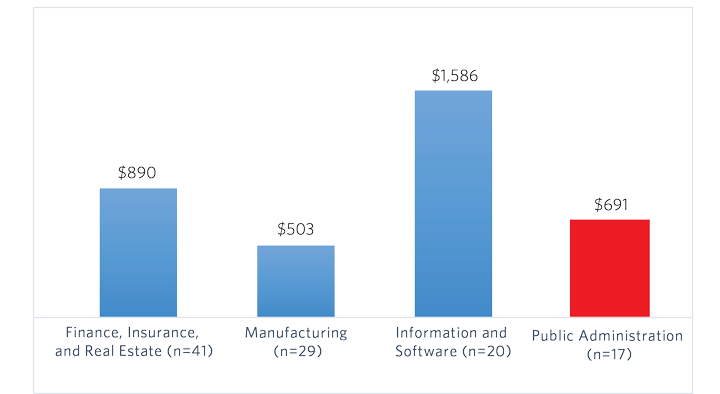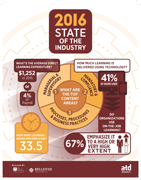The Public Manager Magazine Article
The State of Public Employee Training
ATD's 2016 State of the Industry report gives an overview of spending on training and favored learning options inside and outside government.
Fri Dec 09 2016


According to the Association for Talent Development's 2016 State of the Industry report, sponsored by Bellevue University and The Training Associates, public administration organizations spent an average of $691 per employee on direct learning in 2015. This figure captures the design, administration, and delivery costs associated with learning programs, including the salaries of talent development staff. In addition to reporting on efficiencies and expenditures, ATD's yearly industry review looks at learning content and the role of technology in delivering training.
Using an online survey, ATD's researchers collected information from 17 public administration organizations and 293 organizations in other industries, for a total of 310 participating organizations. This sample of public agencies represented all levels of government, including federal, state, county, city, or municipality; the numbers reported are aggregates and averages across this diverse group.
Public administration organizations spent less on training than information and software firms, which had an average spend of $1,586 per employee, but more than manufacturers, which spent, on average, $503 per employee. The average spending per worker across all participating organizations in all industries was $1,252. Larger organizations typically spend less per employee because they are able to take advantage of economies of scale. For example, they can offer a class at a lower cost per person because they have more participants. Public agencies were more likely to be midsize (500 to 9,999 workers) or large (10,000 or more workers), compared to organizations in other industries.
Unsurprisingly, the most dominant learning offerings for public administration employers were managerial and supervisory material and mandatory and compliance content. Technology plays a critical part in delivering learning today in all industries, and government is no exception, with 48 percent of learning hours in 2015 being technology-based. This includes e-learning, virtual classrooms, and non-networked technologies such as DVDs.
Looking ahead, ATD hopes to expand the number of public administration organizations in future State of the Industry reports to collect richer data and allow for comparisons over time. The 2017 survey, which will ask organizations to report 2016 data, will open next summer.
In addition to providing data on public agencies for the first time, the 2016 report added a snapshot of on-the-job learning activities in 2015. While learning that takes place during working hours rather than in training classes is difficult to measure, the report asked questions pertaining to job shadowing, rotational assignments, and stretch assignments. ATD Research also has delved into the following topics and trends in 2016: learning with social media, experiential learning for leaders, evaluating learning, and building a culture of learning.
Average Direct Expenditure per Employee by Industry
A Word About Benchmarking
The data presented in this article and in the State of the Industry report serve as tools to assist organizations in benchmarking their learning expenditures and activities against those of other organizations. To make benchmarking comparisons more meaningful, readers should review the data by industry and workforce size groupings when possible.
However, be aware that all figures in this article and in the State of the Industry report are averages across groups, and the circumstances your own organization faces may be vastly different from those facing the average participating organization.
